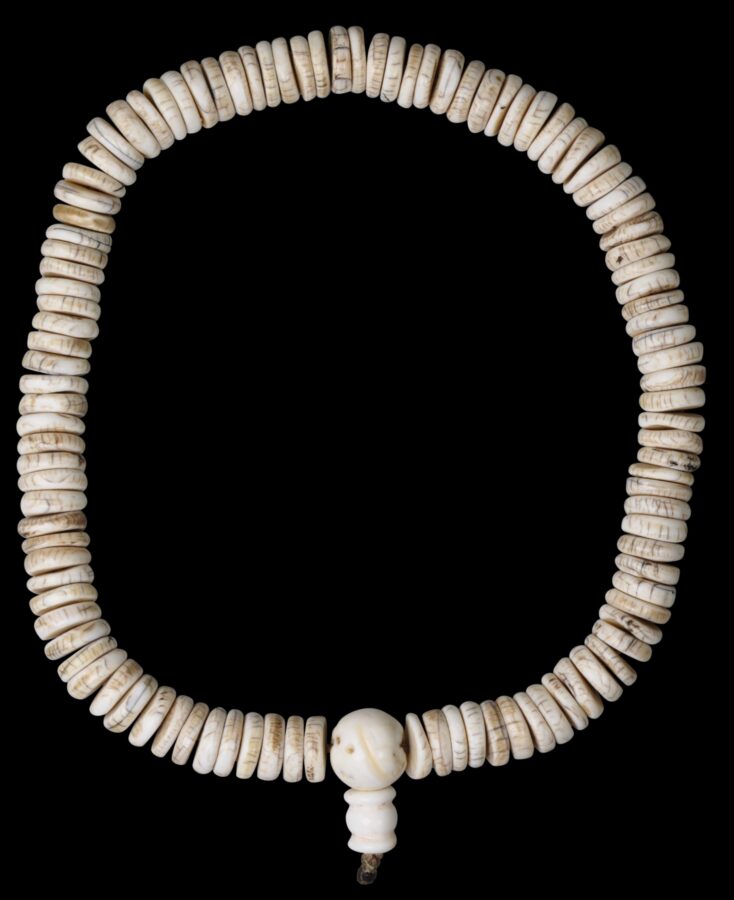Enquiry about object: 10028
Fine, Tibetan Chank Shell Mala or Rosary
Tibet 18th-19th century
circumference: approximately 53cm, diameter of beads: approximately 1.8cm, thickness of beads: between 0.3 and 0.6cm, weight: 349g
Provenance
private collection, UK
This Tibetan Buddhist mala or rosary (sin-‘phen) is of fine quality and has good age and wear from use. It is made entirely from carved chank shell (Turbinella pyrum) most probably sourced from the Bay of Bengal and the Indian Ocean and traded into the Himalayan region via Nepal.
It comprises 106 disk beads, each carved from silvers of chank shell, and then two more at the base which together form a central marker, making 108 in total.
Each disk bead is of uneven shape and thickness, suggesting the rudimentary manner of construction and later wear.
The mala is strung onto a native twine cord.
Buddhist rosaries evolved from ancient Hindu-Indian mala prayer beads. In Tibet, they were used by both laymen and monks. Generally, they comprise 108 beads – sometimes more and sometimes less depending on the personal mantras followed by the user, plus others that served as counters or markers. The beads were used to count repetitions of prayers.
The mala is in excellent condition.
References
Reynolds, V., Tibet: A Lost World: The Newark Museum Collection of Tibetan Art and Ethnology, The American Federation of Arts, 1978.
Sherr Dubin, L., The Worldwide History of Beads, Thames & Hudson, 2009.
Untracht, O., Traditional Jewelry of India, Thames & Hudson, 1997.






